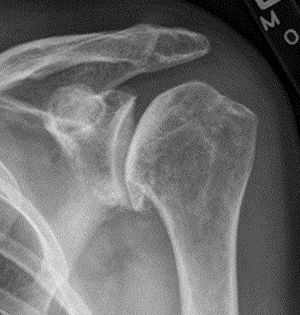
Shoulder pain is one of the most common issues facing people as they age. However, it should be noted that this is not just an issue for older people. Shoulder and back pain can affect anyone, and osteoarthritis is estimated to affect 2.2 million Australians.
Understanding Osteoarthritis of the Shoulder
Osteoarthritis is a condition that affects the bones. In relation to the shoulder, it is when the cartilage in the shoulder wears overtime. This prevents the proper movement of the shoulder as the bone structure starts to degenerate and becomes damaged. The grinding while moving and potential pressure on nerves causes the shoulder pain associated with osteoarthritis of the shoulder.
The good news is that this is classed as a mild degenerative issue, meaning that it can usually be treated to minimize the pain and even repair some of the damage. The key is to see a reputable specialist in shoulder arthritis as soon as possible.
The biggest risk factors for shoulder osteoarthritis are age, sex, weight, genetics, and previous trauma. Infection in the shoulder can also cause issues.
Here are some of the most common treatment options:
Physical Therapy
This is the best place to start as the right exercises can decrease pain, limit further damage, and even restores some of your flexibility. Your physical therapist will provide you with a variety of exercises that should be performed daily.
These are likely to include should elevation stretches, pendulum exercises, blade rotations, the door lean, and even door presses.
Medications
Complementing physical therapy are medications. These are the sort that can generally be purchased over-the-counter. You’ll be looking for painkillers and may be prescribed with Acetaminophen. In addition, anti-inflammatory drugs are often used to help reduce inflammation and pain in the affected shoulder.
Your doctor will discuss which is the best option for your case and monitor your progress. When caught early, this approach can be very effective.
Corticosteroid Injections
Should the above approach not be working then it’s likely that a corticosteroid injection will be considered. This is injected directly into your shoulder by the medical professional to reduce inflammation. This effectively reduces pressure on the joint, improving movement and alleviating pressure on your nerves. However, it also suppresses your immune system which will make you more susceptible to other diseases and infections.
Surgery
If the above options haven’t resolved the issue or made it possible to live with then surgery is the option of last resort.
A surgeon will talk to you about the various options available. These can include shoulder joint replacement which is an invasive operation but will completely eliminate the issue as you will benefit from an artificial shoulder.
Your surgeon may prefer to replace only the head of the humerus or remove a piece of the collarbone to alleviate pressure and increase flexibility.
The final decision will depend on your personal situation and what the x-rays tell your doctor. The good news is that they can do something to resolve the issue and return your quality of life.